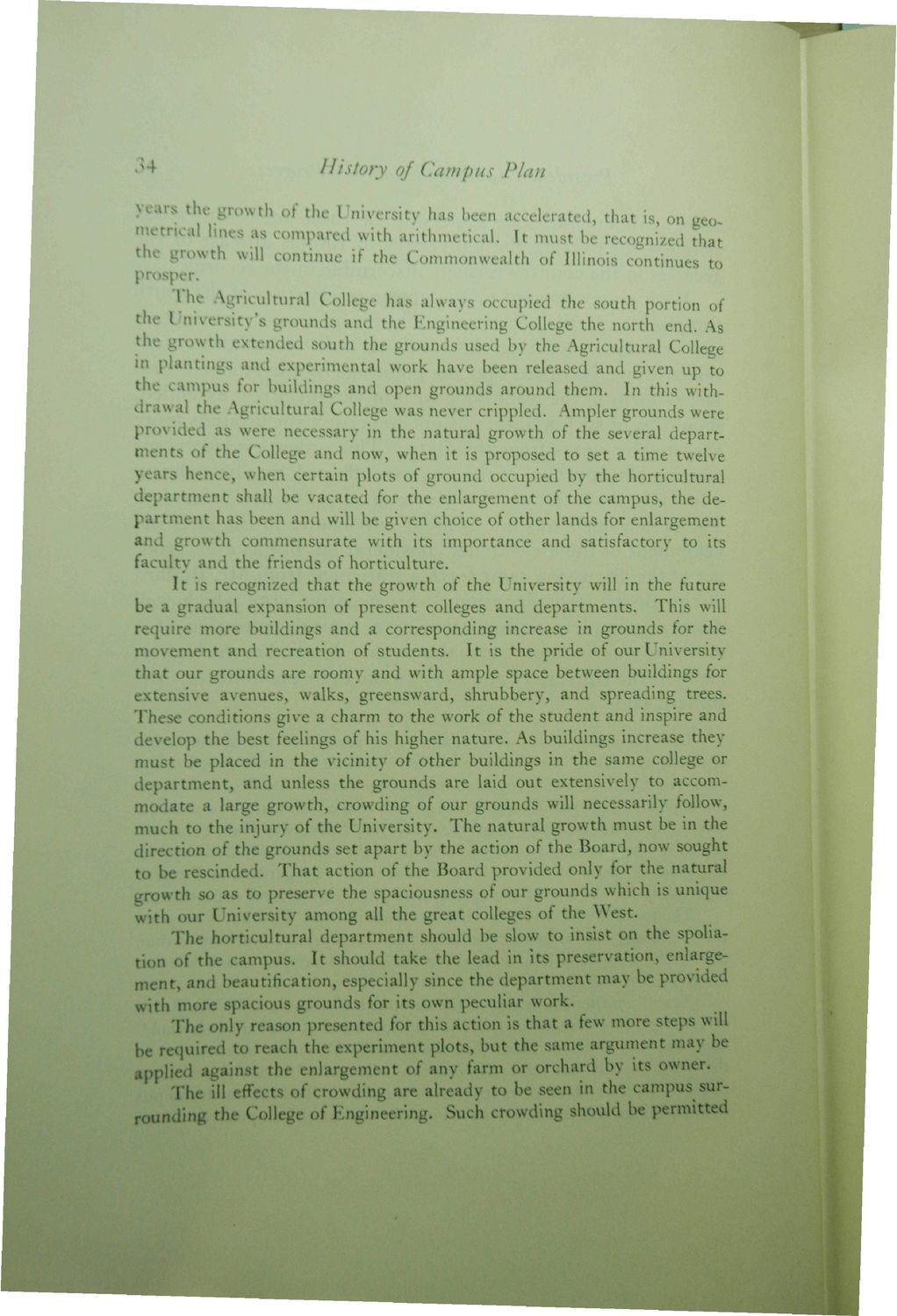| |
| |
Caption: Book - 30 Year Master Plan (Tilton & O'Donnell)
This is a reduced-resolution page image for fast online browsing.

EXTRACTED TEXT FROM PAGE:
34 History of Campus Plan years the growth of the University has been accelerated, that is, on geometrical lines as compared with arithmetical. It must be recognized that the growth will continue if the Commonwealth of Illinois continues to prosper. i he Agricultural College has always occupied the south portion of the University's grounds and the Engineering College the north end. As the growth extended south the grounds used by the Agricultural College in plantings and experimental work have been released and given up to the campus for buildings and open grounds around them. In this withdrawal the Agricultural College was never crippled. Ampler grounds were provided as were necessary in the natural growth of the several departments of the College and now, when it is proposed to set a time twelve years hence, when certain plots of ground occupied by the horticultural department shall be vacated for the enlargement of the campus, the department has been and will be given choice of other lands for enlargement and growth commensurate with its importance and satisfactory to its faculty and the friends of horticulture. It is recognized that the growth of the University will in the future be a gradual expansion of present colleges and departments. This will require more buildings and a corresponding increase in grounds for the movement and recreation of students. It is the pride of our University that our grounds are roomy and with ample space between buildings for extensive avenues, walks, greensward, shrubbery, and spreading trees. These conditions give a charm to the work of the student and inspire and develop the best feelings of his higher nature. As buildings increase they must be placed in the vicinity of other buildings in the same college or department, and unless the grounds are laid out extensively to accommodate a large growth, crowding of our grounds will necessarily follow, much to the injury of the University. The natural growth must be in the direction of the grounds set apart by the action of the Board, now sought to be rescinded. That action of the Board provided only for the natural growth so as to preserve the spaciousness of our grounds which is unique with our University among all the great colleges of the West. The horticultural department should be slow to insist on the spoliation of the campus. It should take the lead in its preservation, enlargement, and beautification, especially since the department may be provided with more spacious grounds for its own peculiar work. The only reason presented for this action is that a few more steps will be required to reach the experiment plots, but the same argument may be applied against the enlargement of any farm or orchard by its owner. The ill effects of crowding are already to be seen in the campus surrounding the College of Engineering. Such crowding should be permitted
| |